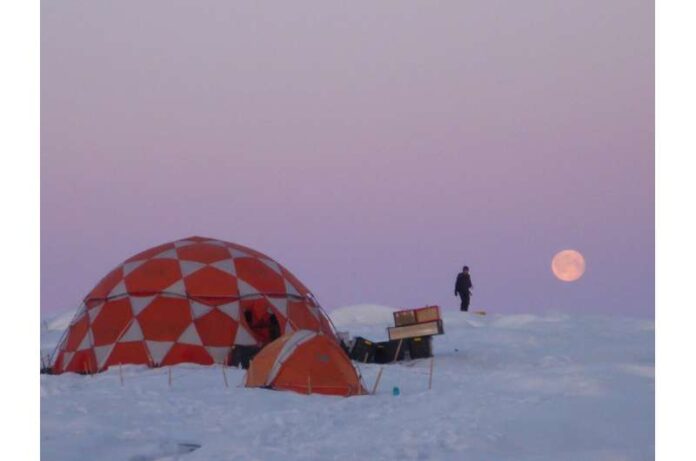Researchers have found that the movement of glaciers in Greenland is more complex than previously thought, with deformation in regions of warmer ice containing small amounts of water that account for motion that had often been assumed to be caused by sliding where the ice meets the bedrock beneath.
The international team of researchers led by the University of Cambridge used computer modeling techniques based on earlier fiber-optic measurements from the Greenland Ice Sheet to build a more detailed picture of the behavior of the world’s second-largest ice sheet.
Their results, reported in the journal Science Advances, could be used to develop more accurate predictions of how the Greenland Ice Sheet will continue to move in response to climate change.
Mass loss from the Greenland Ice Sheet has increased sixfold since the 1980s and is now the single largest contributor to global sea-level rise. Around half of this mass loss is from surface meltwater runoff, while the other half is driven by discharge of ice directly into the ocean by fast-flowing glaciers that reach the sea.
The RESPONDER project is exploring the dynamics of the Greenland Ice Sheet using a combination of physical measurements and computer modeling.
The current research builds on earlier observations reported by the RESPONDER team in 2021 using fiber-optic cables. In that work, the team found that the temperature of ice sheets does not vary as a smooth gradient, but is far more heterogeneous, with areas of highly localized deformation warming the ice further.
The borehole measurements also showed that the ice at the base contains small amounts—up to roughly two percent—of water. In some parts of the ice sheet, this mixed ice-water layer, called temperate ice, was around eight meters thick, but in other parts it was up to 70 meters thick.
“The addition of even tiny amounts of water softens the ice considerably, transforming it into a unique material with substantially altered mechanical characteristics,” said first author Dr. Robert Law, who completed the work while based at Cambridge’s Scott Polar Research Institute and is now based at the University of Bergen. “We wanted to know why the thickness of this layer varied so much, because if we don’t fully understand it, our models of ice sheet behavior won’t fully capture the physical processes occurring in nature.”

